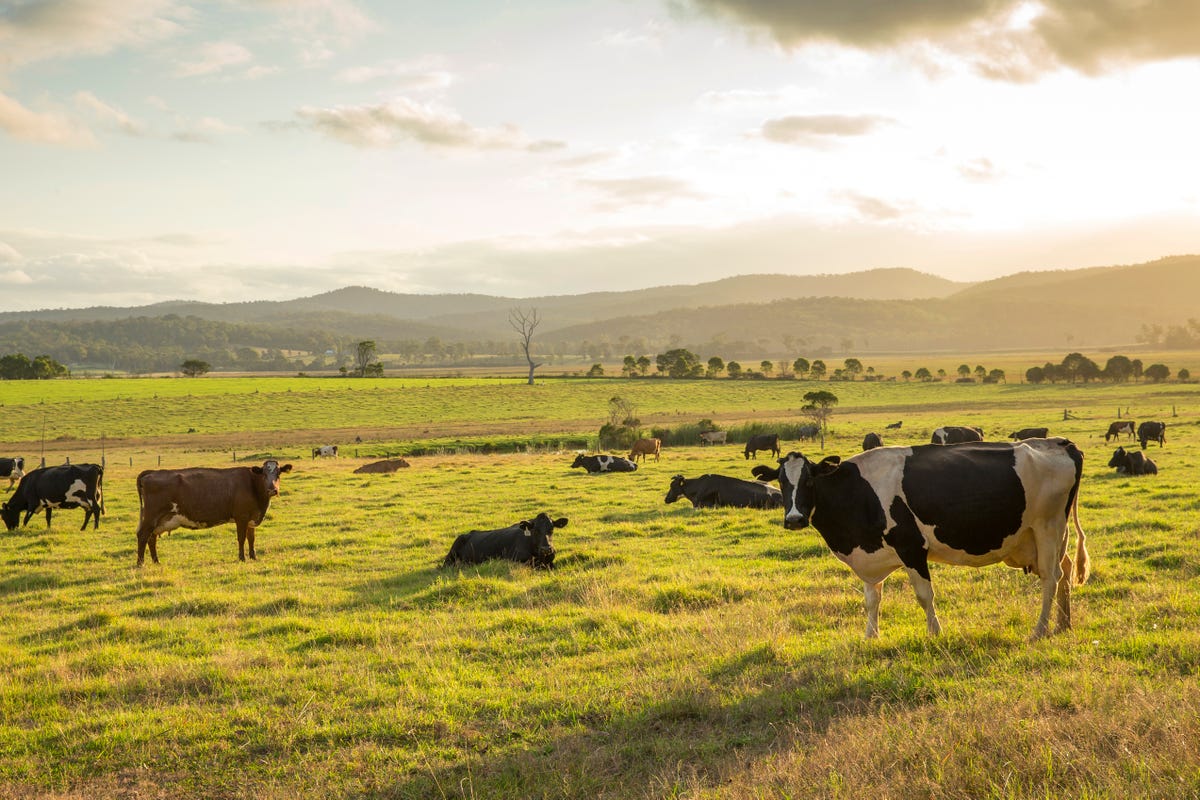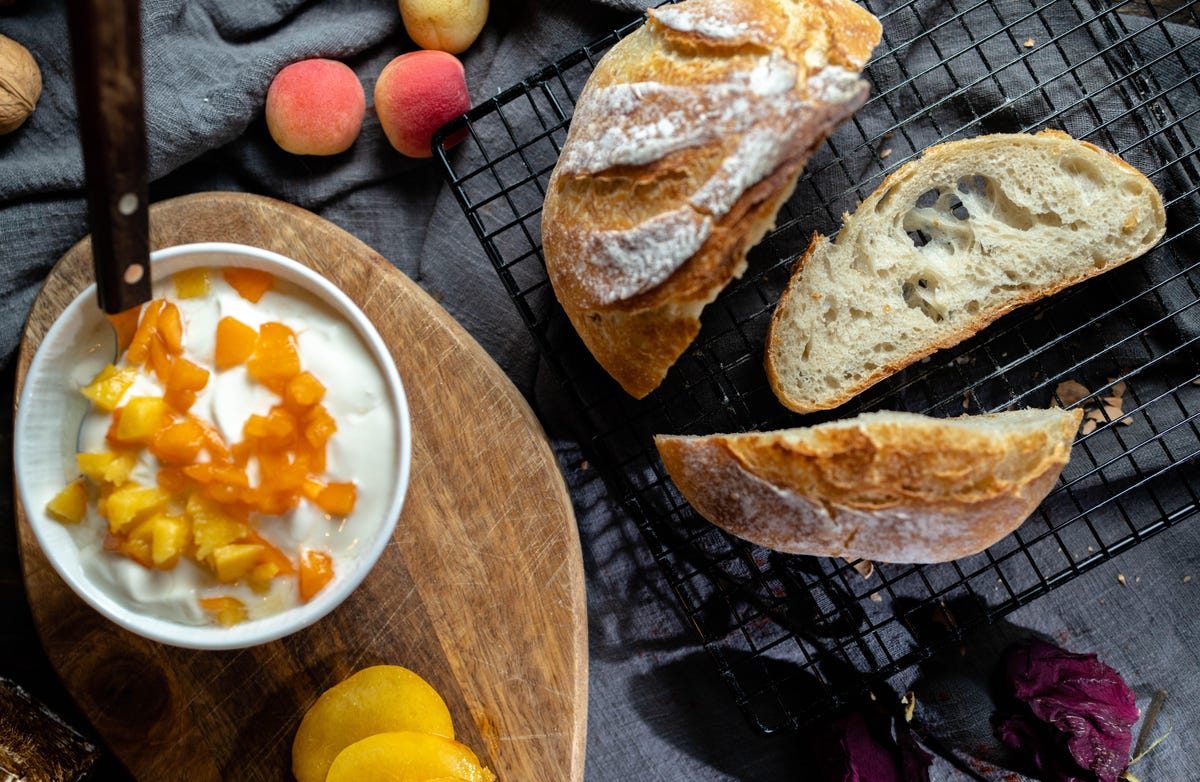Bird Flu Is in Dairy Cows. Is Raw Milk Safe to Drink?
Bird flu, or avian influenza, has infected cows in a handful of US states, furthering the spread of the H5N1 virus that's been causing outbreaks in birds over the last couple of years.

While the fact that bird flu is spreading to more animals is concerning in general, the US Centers for Disease Control and Prevention says the current threat to the general public is low for those who do not spend time around animals that may be affected or sick, and that health agencies are continuing to closely monitor the situation, which includes watching for changes to the virus that could make it more of a threat to people.
But now that some cows are sick, what about the milk? As long as it's been pasteurized, there's no threat to the milk or dairy products you'd find in the US right now, since the pasteurization process required for commercial milk sales would kill a virus like avian influenza, according to a Q&A posted earlier this month by the US Food and Drug Administration.
That raises another question: What about the noncommercial milk supply, or raw milk that hasn't been pasteurized? While people who grew up on farms or around cattle might have had unpasteurized milk for dinner, raw milk has found a growing audience: people seeking it out for wellness purposes, or sometimes traveling to local farms to consume a food they feel is more natural or holistic.
About raw milk during these bird-flu times, the FDA said in the same post that it isn't clear yet whether H5N1 viruses can be transmitted through drinking unpasteurized milk and eating dairy products like cheese if it's made from raw milk from infected cows. It reiterated its general stance that people should avoid consuming raw or unpasteurized milk for risks of consuming pathogens that are particularly dangerous to children, older people, people who are pregnant and people with weakened immune systems.
The experts I spoke with for this story essentially said that there's no need to be concerned about getting bird flu from milk because it should be hard to catch influenza from eating or drinking. However, they stressed the existing health risks of unpasteurized milk, consumption and sales of which often fall outside what you'd typically see on grocery store shelves, dependent on local laws.
"In my opinion, there's a concern with raw milk acquisitions which can become part of the food system, and people secure that milk outside of going to the grocery store," said Meg Schaeffer, an infectious disease epidemiologist and National Public Health advisor at the analytics firm SAS.
Here's what to know about unpasteurized milk, why people drink it and how we should be thinking about it in the context of bird flu in dairy cows.
Pasteurization is a heating process invented in the 1860s by French chemist Louis Pasteur, and has been used widely since as a means to kill harmful bacteria and pathogens that can sometimes cause serious illness. These include bacteria that cause illness like E. coli, Listeria and Salmonella, and other pathogens.
Pasteurization would also kill the virus that causes bird flu, which is why health officials have stressed there's no risk to pasteurized dairy products or the commercial milk supply.
Some dairy products may be ultrapasteurized, which is when milk is heated more quickly than typical pasteurization (a couple of seconds) at a higher temperature and then rapidly cooled down. This extends its shelf life.

Pasteurized dairy products can be organic or nonorganic. Whether or not you can buy or sell raw, unpasteurized milk depends on the laws in your state. In California, for example, you can buy raw milk from stores, although it has to be properly labeled with a warning stating it's unpasteurized.
Even if someone were to accidentally ingest unpasteurized milk from a sick cow, that's still not likely reason to panic, according to Jenna Guthmiller, an immunologist, influenza researcher and assistant professor in the Department of Immunology and Microbiology at the University of Colorado. Influenza viruses are unstable outside the body, she explained, and drinking milk "bypasses the normal process by which we get infected" with flu, she explained.
Combine this with farming practices that would isolate milk from sick cows, and "there's no real reason to think these viruses would contaminate our milk supply," Guthmiller said.
Dr. Amesh Adalja, an infectious disease specialist and senior scholar at the Johns Hopkins Center for Health Security, said in an email there's no changed threat to the milk supply, partly because people have already been advised to avoid raw or unpasteurized dairy, and also because it's "unclear" whether there'd be a live virus in unpasteurized milk or if it could infect humans by their drinking raw milk, he explained. Influenza viruses aren't spread to humans via ingestion.
"But there are many reasons not to drink it to begin with," he added.
Why people drink raw or unpasteurized milkProponents of raw or unpasteurized milk prefer it for different reasons, including its creamier texture and taste, or anecdotal reports that it's easier on digestion or more nutritious.
You can't argue with someone's taste or texture preferences when it comes to food. In terms of the nutritional or health benefits of raw milk compared to unpasteurized milk, research seems to have pushed back on or debunked the majority of claims. The FDA, for example, says that raw milk is not a cure or antidote for lactose intolerance. The agency also claims on the same information page that people are misusing the results of a study from 2007 that was on farm milk consumption, not raw milk consumption.
In an analysis of the risks versus benefits of raw milk research, Healthline reported that any small antimicrobial benefit from raw milk would be neutralized when it's refrigerated. It also reported based on the results of a systematic review that minor nutrient losses of water-soluble vitamins, including some B vitamins, are already low in milk generally.
"Multiple studies have shown that pasteurization does not significantly affect the nutritional quality of milk," the CDC concludes. "Scientists do not have any evidence that shows a nutritional benefit from drinking raw milk."
As someone who grew up on a dairy farm, Guthmiller used to drink unpasteurized milk herself -- she gets it. When it comes to consuming raw milk, she said, "the risks certainly outweigh the pros."
"We're getting to a point with pasteurization where it looks like real milk," Guthmiller said. In terms of nutritional quality, "you really do not affect the contents of the milk" by pasteurizing it, she said, because it's done so quickly.
If you're looking for foods with proven gut-health properties, look at adding foods like kimchi, pickled vegetables, sourdough, apple cider vinegar and buttermilk.
Risks of drinking unpasteurized milkIn addition to what Guthmiller called "old timey" bacteria that used to be a problem back in the day, before processes like pasteurization cleaned up the food supply, unpasteurized or raw milk can expose people to serious illnesses like E. coli and listeria. While it may only cause temporary or milder illness in most people, people with weakened immune systems, older adults, those who are pregnant and very young children are especially at risk of serious health effects from drinking unpasteurized milk.
The risk is especially high in children, according to Schaeffer, who are especially vulnerable to severe illness In serious cases, health effects from drinking raw milk that's been contaminated can lead to kidney failure.
Schaeffer also pushed back on claims that diseases that once were a big problem in countries like the US, like tuberculosis, are no longer an issue. That's true about tuberculosis, she said, but we also have effective treatment for it. We don't, she said, for some types of illness that children can get from unpasteurized milk.
"The diseases, if anything, are even stronger -- antibiotic resistant," Schaeffer said. She added that some bacteria that may be in raw milk may go undetected by farmers because they don't cause illness in cows, but do in people.
While buying raw milk from a farm you know sets higher safety standards and practices "good hygiene" during milking can reduce the risk of contaminated raw milk, it won't eliminate it, per the CDC.
I'd be a hypocrite if I wrote this without noting I've experimented with a few things in the wellness realm that were either not recommended by a health body like the CDC, or "rooted in science," as they say. Sometimes, I like wading into wellness waters tipped toward murky in the swirl of potential risk with potential benefit. A couple of tamer or lower-risk examples include a time when I dumped a spoonful of coconut oil into my coffee each day and the fact that I own a pair of blue-light-blocking glasses.
The idea of raw milk is also intriguing to me because I like the notion of prioritizing foods that are locally sourced and full of fat for their satiating properties, but you won't find me traveling upstate to a local farm for a fresh jug of raw milk. This is true even as my current individual risk is relatively lower than that of a child or someone who's pregnant, and even if the commercial milk supply remains safe, and bird flu proves virtually impossible to transmit through milk. (Outside of milk, it's worth noting that animal-to-human transmission of viruses is a growing threat.) I can get the same small or hypothetical benefit from other whole food sources, without rolling the public health dice.

















































